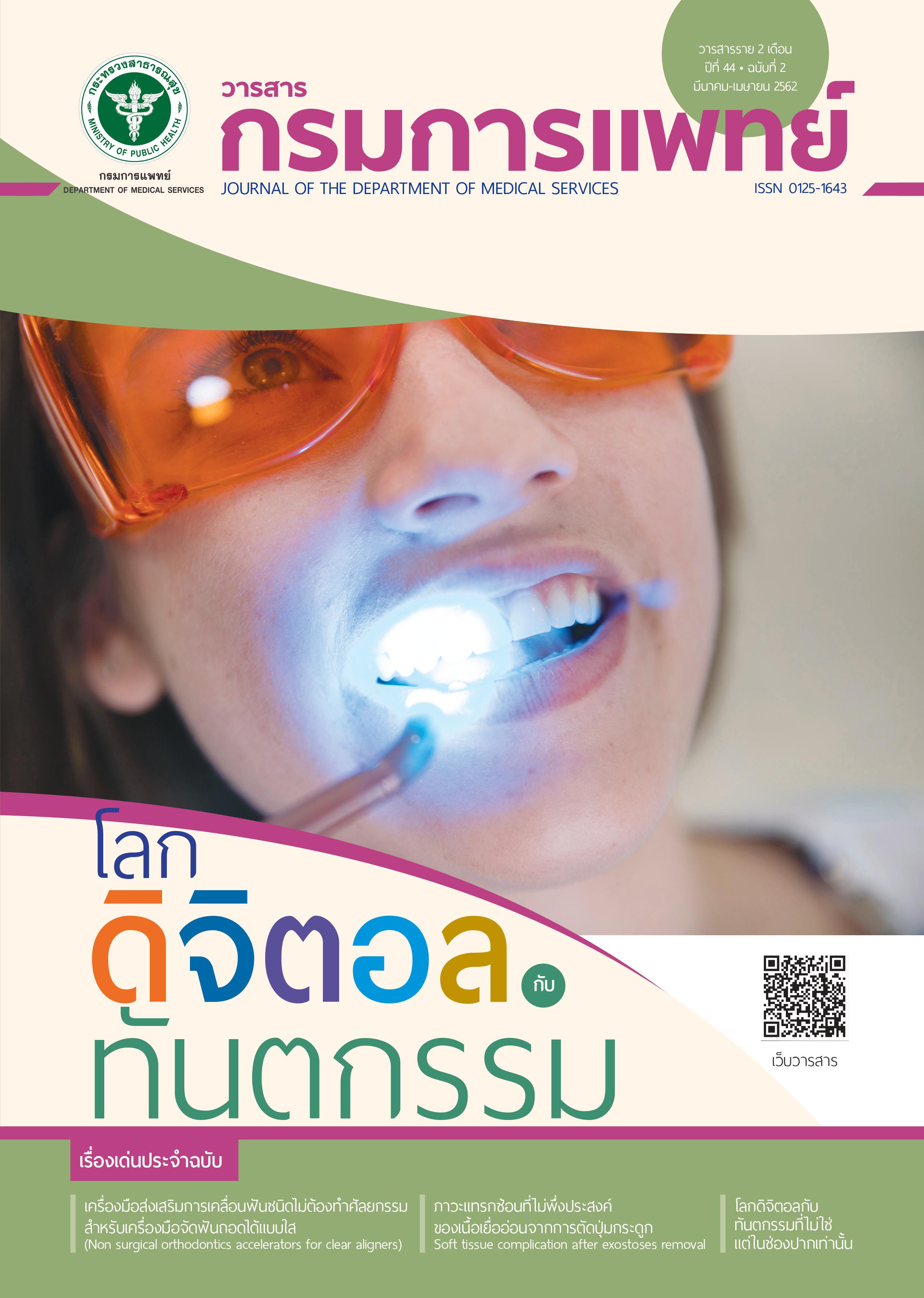The Study of Interface Pressure between Wheelchair Patients and Dental Platform Prototype
Keywords:
Interface pressure, Dental platform, Wheelchair patientReferences
Rashid-Kandvani F, Nicolau B, Bedos C. Access to dental services for people using a wheelchair. American Journal of Public Health 2015; 105: 2312-7.
Chen D, Apple DF Jr, Hudson LM, Bode R. Medical complications during acute rehabilitation following spinal cord injury–current experience of the model systems. Arch Phys Med Rehabil 1999; 80:1397–1401.
Krause JS, Broderick L. Patterns of recurrent pressure ulcers after spinal cord injury: identification of risk and protective factors 5 or more years after onset. Arch Phys Med Rehabil 2004; 85:1257–64.
Raghavan P, Raza WA, Ahmed YS, Chamberlain MA. Prevalence of pressure sores in a community sample of spinal injury patients. Clin Rehabil 2003; 17:879–84.
Salzberg CA, Byrne DW, Cayten CG, van Niewerburgh P, Murphy JG, Viehbeck M. A new pressure ulcer risk assessment scale for individuals with spinal cord injury. Am J Phys Med Rehabil 1996; 75:96–104.
Kosiak M. Etiology and pathology of ischemic ulcers. Arch Phys Med Rehabil 1959; 40:62-9.
Reswick JB, Rogers JE. Experience at Rancho Los Amigos Hospital with devices and techniques to prevent pressure sores. In: Kenedi RM, Cowden JM, Scales JT, editors. Bedsore Biomechanics, Baltimore: University Park Press; 1976.
Regan M, Teasell RW, Keast D, Mortenson WB, Aubut J. Pressure ulcers following spinal cord injury. In: Eng JJ, Teasell RW, Miller WC, Wolfe DL, Townson AF, Aubut J, Abramson C, Hsieh JTC, Connolly S, editors. Spinal Cord Injury Rehabilitation Evidence, Vancouver; 2006.
Alverzo JP, Rosenberg JH, Sorensen CA, Deleon SS. Nursing care and education for patients with spinal cord injury. In: Sisto SA, Druin E, Sliwinski MM, editors. Spinal Cord Injuries: Management and Rehabilitation, 1 Har/DVD edition. Mosby: St. Louis, Missouri; 2006.
Nawoczenski DA. Pressure sores: prevention and management. In: Buchanan LE, Nawoczenski DA, editors. Spinal Cord Injury: Concepts and Management Approaches, Baltimore: Williams & Wilkins; 1987.
Lacoste M, Weiss-Lambrou R, Allard M, Dansereau J. Powered tilt/recline systems: why and how are they used? Assist Technology 2003; 15:58–68.
Sacks AH. Theoretical prediction of a time-at-pressure curve for avoiding pressure sores. J Rehabil Res Dev 1989; 26:27-34.
Hobson DA. Comparative effects of posture on pressure and shear at the body-seat interface. J Rehabil Res Dev 1992; 29:21–31.
Henderson JL, Price SH, Brandstater ME, Mandac BR. Efficacy of three measures to relieve pressure in seated persons with spinal cord injury. Arch Phys Med Rehabil 1994; 75:535–9.
Burns SP, Betz KL. Seating pressures with conventional and dynamic wheelchair cushions in tetraplegia. Arch Phys Med Rehabil 1999; 80:566-71.
Downloads
Published
How to Cite
Issue
Section
License
บทความที่ได้รับการตีพิมพ์เป็นลิขสิทธิ์ของกรมการแพทย์ กระทรวงสาธารณสุข
ข้อความและข้อคิดเห็นต่างๆ เป็นของผู้เขียนบทความ ไม่ใช่ความเห็นของกองบรรณาธิการหรือของวารสารกรมการแพทย์



